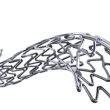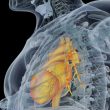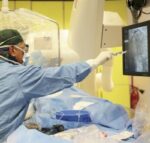The higher rate of restenosis in the diabetic population is historic and has been reproduced in all studies and with all kinds of stents, but it was only after the FREEDOM trial when we found out about the higher infarction rate with PCI compared to surgery. This is why 50% of patients undergoing CABG are diabetic. Apart from the above...
Cardiovascular MR Perfusion Imaging: Good Initial Alternative in Stable Chronic Angina
In the initial management of patients with stable chronic angina, a non-invasive strategy with cardiovascular MR perfusion imaging seems to provide similar results to invasive strategies. At one year, MACE rate (combination of all cause death, non-fatal infarction and target vessel revascularization) resulted 3.3% for MRI vs. 3.9% for fractional flow reserve (FFR) informed...
SYNERGY vs. XIENCE in Complex Real-World Patients
Courtesy of Dr. Guillermo Migliaro. Technological advancements in drug-eluting stents (DES) have shown significant improvement as regards the safety and efficacy of these devices. DES are considered to be the golden standard for the treatment of percutaneous coronary interventions. DES with permanent or durable polymers (DP) have been associated with local inflammatory reactions and...
Left Main Coronary Artery Angioplasty vs. Surgery: A Large Meta-Analysis
Courtesy of Dr. Carlos Fava. Around 5% of patients undergoing coronary angiography present severe left main coronary artery (LMCA) lesions. Myocardial revascularization surgery (MRS) is the preferred method for this group, although there is evidence from different randomized trials demonstrating the safety and efficacy of unprotected LMCA angioplasty, with results similar to those obtained through the traditional strategy....
More Evidence For Left Main PCI
Courtesy of Dr. Carlos Fava. Left main coronary artery disease (LMD), has historically been treated with myocardial revascularization surgery (CABG), but for some years now, and with the development of new drug eluting stents (DES), percutaneous coronary intervention (PCI) has been gathering support in this challenging territory. The study analyzed the SYNTAX and PRECOMBAT...
Left Main Coronary Artery Angioplasty Would Be Non-Inferior to Surgery
Courtesy of Dr. Carlos Fava. Left main coronary artery (LMCA) lesions have always been defined as high-risk, with surgery as treatment of choice. Drug-eluting stents (DES) have slowly changed that, but their use still lacks strong supporting evidence. The Evaluation of XIENCE versus Coronary Artery Bypass Surgery for Effectiveness of Left Main Revascularization (EXCEL) study...
SCIPIO trial: Intracoronary infusion of autologous cardiac stem cells improve ventricular function.
This is the first trial that used autologous cardiac stem cells for the treatment of ischemic cardiomyopathy. It consecutively enrolled 37 patients with reduced ejection fraction (lower than 40%) before myocardial revascularization surgery. It was administered by intra coronary infusion and 17 were control subjects. In the group injected with stem cells, EF significantly improved...
ELISA 3: Early vs. late invasive strategy in patients without high-risk ST elevation
The invasive strategy is preferred to treat patients with acute coronary syndromes without ST-segment elevation, but the ideal time for the procedure is controversial. This study randomized 542 patients with acute coronary syndrome without high-risk ST elevation to carry out immediate (invasive treatment within 12 hours) or late treatment (after 48 hours). The primary endpoint...
The first portable and intelligent heart monitor has been developed
The device, which should reach the market this year with the name Nexcor, was developed by a group of specialists in Brazil is the first smart portable heart monitor in the world, which allows remote sending electrocardiograms, ocation of the patient for assistance and early detection heart problems. This device automatically detects earliest variations of...
Partial occlusion of coronary sinus reduces refractory angina
Original title: Efficacy of a Device to Narrow the Coronary Sinus in Refractory Angina. Reference: Verheye S et al. N Engl J Med 2015 Feb 5;372(6):519-27. The number of patients with severe diffuse coronary artery disease who are not candidates for revascularization is growing in Western countries, generating multiple procedures and increasing healthcare expenditure. New and unconventional solutions...








